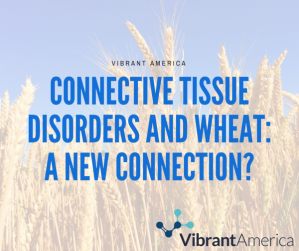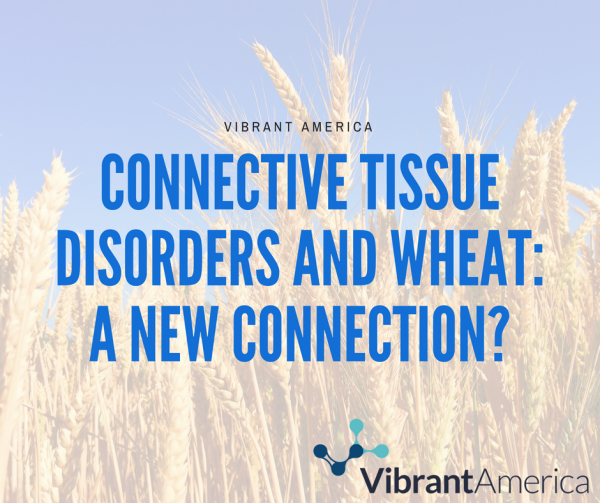 What are Connective Tissue Disorders?
What are Connective Tissue Disorders?
Connective tissue disorders (CTDs) are diseases that affect the parts of the body that connect the structures of the body together, such as collagen and elastin in the joints. Collagen, however, is also found in the skin, cornea, bone, and blood vessels. Elastin is found in skin as well, but also in ligaments of muscles.
When someone has a connective tissue disorder, their collagen and elastin are inflamed and often very painful and/or swollen.
Connective tissue disorders are said to affect anywhere from 0.5 to 3% of the population, with increasing incidence as we age, as well as affecting far more women than men (most connective tissue disorders affect women to men in about a 6:1 to 10:1 ratio) [1].
The most commonly diagnosed connective tissue disorders are:
- Rheumatoid arthritis
- Scleroderma
- Sjogren’s syndrome
- Systemic sclerosis
- Polyangiitis (GPA)
- Systemic lupus erythematosus lupus (SLE)
- Polymyositis/dermatomyositis
How Do You Get Tested For Connective Tissue Disorders?
If you suspect that you have a connective tissue disorder, or if you have relatives in your immediate family that have been diagnosed with connective tissue disorders and you are worried about your risk, you can get a series of blood tests done to detect antibodies to proteins in your connective tissues, which can help your healthcare provider determine your most likely diagnosis and best course of treatment.
The standard test for CTDs used to be testing for Antinuclear Antibodies (ANA). ANA has historically been run before running a more comprehensive and specific test called an Extractable Nuclear Antigens (ENA) test. The previous school of thought was that ANA will show up positive before ENA will.
While many healthcare providers still run ANA as a first line test, Vibrant has found through research that approximately 20% of patients have ENA positive before ANA, up to 2 years earlier [2]…which means if your healthcare provider is running ANA first and your results are negative, but you are still symptomatic, you may still have a CTD and should seek additional testing, such as ENA.
The type of ENA markers you are positive for will typically indicate a pattern of specific connective tissue disorder(s) and provide your healthcare provider with a more definitive likely diagnosis.
What About Diet?
In the integrative medicine world, there have long been anecdotal findings, as well as case studies, of individuals with connective tissue disorders who experience symptom relief from eliminating grains or, in some cases, just gluten from their diet.
While no large scale randomized controlled clinical trials have yet been performed to assess whether elimination of gluten or wheat is a viable treatment consideration for a majority of those suffering from connective tissue disorders, personal claims still persist from many patients that they see at least some relief from this nutritional elimination.
The good news is that Vibrant has recently submitted a study, which is pending publication in Biomarker Insights, that examined the blood of 713 subjects with both a Vibrant ENA 11 panel and a Vibrant Wheat Zoomer for trends and prevalence of antibodies and found some interesting things:
- Positive ENA markers are present at only about 2% in the general population
- Positive ENA markers are present in 29% of those with celiac disease
- Positive ENA markers are present in 27% of those with gluten or wheat sensitivity
What Does This Mean?
Put simply, a variety of connective tissue disorders appear to be much more significant and common in individuals with gluten- and wheat-related antibodies (sensitivities). It is not clear from this whether gluten or wheat is part of the underlying mechanism, but it is clear that in a significant number of affected individuals, a gluten-free or wheat-free diet is likely to be warranted as a part of nutritional interventions.
Of the ENA markers tested, the one showing the most significant elevations when wheat or gluten sensitivity was present was anti-histone, which is most commonly associated with both Drug-Induced Lupus Erythematosus (DILE) and Systemic Lupus Erythematosus (SLE), with some more moderate elevations of SSB (La), Chromatin, Centromere, and RNA Polymerase III antibodies.
Have you been tested for gluten or wheat sensitivity?
In case you have been diagnosed with a connective tissue disorder, but have not yet been tested for gluten or wheat sensitivity, Vibrant offers the Wheat Zoomer, the most comprehensive test on the market, with the highest sensitivity and specificity to the entire wheat proteome.
It can definitively tell you if you are sensitive to any of the thousands of peptides found in wheat (including gluten), and even if your intestinal barrier is impaired, which allows your immune system greater exposure to foreign proteins, and which may exacerbate your autoimmune disease symptoms through an inflammatory response.
If you have had a Wheat Zoomer run and have a gluten or wheat sensitivity, or even celiac disease, and are concerned about your risk for connective tissue disorders, talk to your healthcare provider about getting tested with Vibrant’s ENA 11 panel for a more conclusive picture of your risk.
References
1. M. Gaubitz; Epidemiology of connective tissue disorders, Rheumatology, Volume 45, Issue suppl_3, 1 October 2006, Pages iii3–iii4, https://doi.org/10.1093/rheumatology/kel282
2. Yang, Y., Krishna, K., Ranganathan, V., Jayaraman, V., Wang, T., Bei, K., Krishnamurthy, H. and Rajasekaran, J.J. (2018) A Multiplex Autoantibody Panel for Early Detection of Autoimmune Disease Activity. Open Journal of Rheumatology and Autoimmune Diseases, 8, 43-52. https://doi.org/10.4236/ojra.2018.82004


2 thoughts on “Connective Tissue Disorders and Wheat: A New Connection”